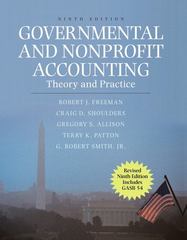Answered step by step
Verified Expert Solution
Question
1 Approved Answer
I dont know where to begin with this, If some answer this, please explain so i can understand Problem 13-2A The comparative statements of Osborne
I dont know where to begin with this, If some answer this, please explain so i can understand
 Problem 13-2A The comparative statements of Osborne Company are presented here. OSBORNE COMPANY Income Statements For the Years Ended December 31 2014 Net sales Cost of goods sold Gross profit Selling and administrative expenses Income from operations $1,896,338 1,064,338 832,000 505,798 326,202 2013 $1,756,298 1,011,798 744,500 484,798 259,702 Other expenses and losses Interest expense Income before income taxes Income tax expense Net income 23,226 21,226 302,976 93,226 $ 209,750 238,476 74,226 $ 164,250 OSBORNE COMPANY Balance Sheets December 31 Assets 2014 2013 Current assets Cash Debt investments (short-term) Accounts receivable Inventory Total current assets Plant assets (net) Total assets $ 60,100 74,000 123,598 127,226 384,924 661,164 $1,046,088 $ 64,200 50,000 108,598 116,726 339,524 532,464 $871,988 $ 165,798 44,726 210,524 232,164 442,688 $151,198 43,226 194,424 212,164 406,588 290,000 313,400 603,400 $1,046,088 300,000 165,400 465,400 $871,988 Liabilities and Stockholders' Equity Current liabilities Accounts payable Income taxes payable Total current liabilities Bonds payable Total liabilities Stockholders' equity Common stock ($5 par) Retained earnings Total stockholders' equity Total liabilities and stockholders' equity All sales were on account. Net cash provided by operating activities for 2014 was $235,050. Capital expenditures were $135,430, and cash dividends were $61,750. Compute the following ratios for 2014. (Round all answers to 2 decimal places, e.g. 1.83 or 12.61%.) $ (a) Earnings per share (b) Return on common stockholders' equity % (c) Return on assets % (d) Current ratio :1 (e) Accounts receivable turnover times (f) Average collection period days (g) Inventory turnover times (h) Days in inventory days (i) Times interest earned times (j) Asset turnover times (k) Debt to assets % (l) Current cash debt coverage times (m) Cash debt coverage times $ (n) Free cash flow Don't show me this message again for the assignment
Problem 13-2A The comparative statements of Osborne Company are presented here. OSBORNE COMPANY Income Statements For the Years Ended December 31 2014 Net sales Cost of goods sold Gross profit Selling and administrative expenses Income from operations $1,896,338 1,064,338 832,000 505,798 326,202 2013 $1,756,298 1,011,798 744,500 484,798 259,702 Other expenses and losses Interest expense Income before income taxes Income tax expense Net income 23,226 21,226 302,976 93,226 $ 209,750 238,476 74,226 $ 164,250 OSBORNE COMPANY Balance Sheets December 31 Assets 2014 2013 Current assets Cash Debt investments (short-term) Accounts receivable Inventory Total current assets Plant assets (net) Total assets $ 60,100 74,000 123,598 127,226 384,924 661,164 $1,046,088 $ 64,200 50,000 108,598 116,726 339,524 532,464 $871,988 $ 165,798 44,726 210,524 232,164 442,688 $151,198 43,226 194,424 212,164 406,588 290,000 313,400 603,400 $1,046,088 300,000 165,400 465,400 $871,988 Liabilities and Stockholders' Equity Current liabilities Accounts payable Income taxes payable Total current liabilities Bonds payable Total liabilities Stockholders' equity Common stock ($5 par) Retained earnings Total stockholders' equity Total liabilities and stockholders' equity All sales were on account. Net cash provided by operating activities for 2014 was $235,050. Capital expenditures were $135,430, and cash dividends were $61,750. Compute the following ratios for 2014. (Round all answers to 2 decimal places, e.g. 1.83 or 12.61%.) $ (a) Earnings per share (b) Return on common stockholders' equity % (c) Return on assets % (d) Current ratio :1 (e) Accounts receivable turnover times (f) Average collection period days (g) Inventory turnover times (h) Days in inventory days (i) Times interest earned times (j) Asset turnover times (k) Debt to assets % (l) Current cash debt coverage times (m) Cash debt coverage times $ (n) Free cash flow Don't show me this message again for the assignment Step by Step Solution
There are 3 Steps involved in it
Step: 1

Get Instant Access to Expert-Tailored Solutions
See step-by-step solutions with expert insights and AI powered tools for academic success
Step: 2

Step: 3

Ace Your Homework with AI
Get the answers you need in no time with our AI-driven, step-by-step assistance
Get Started


